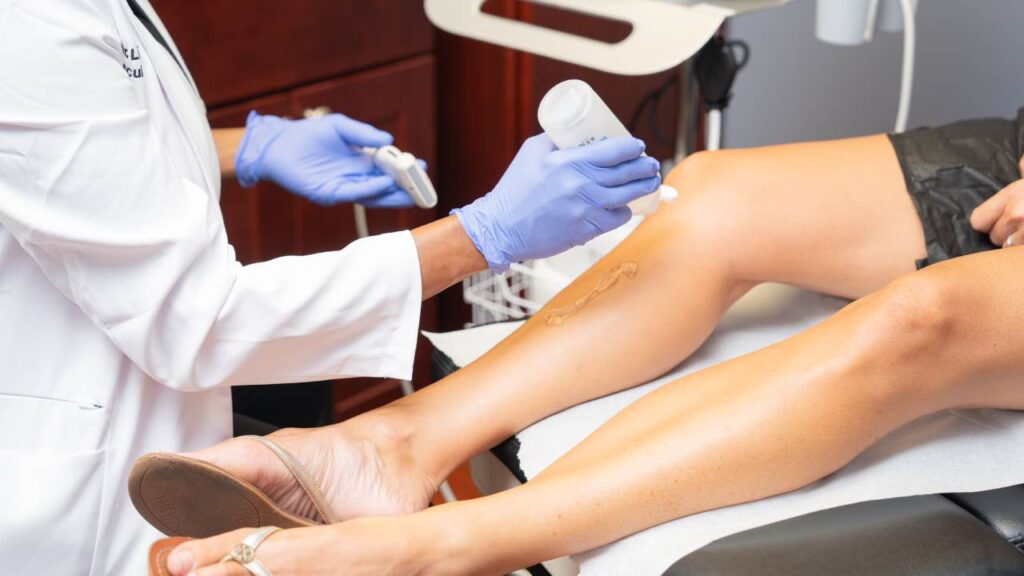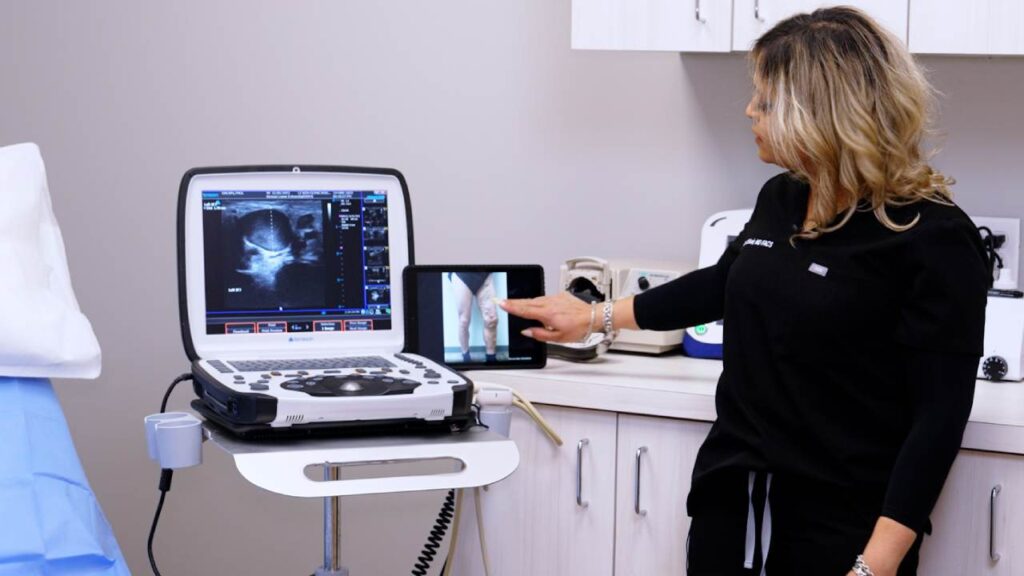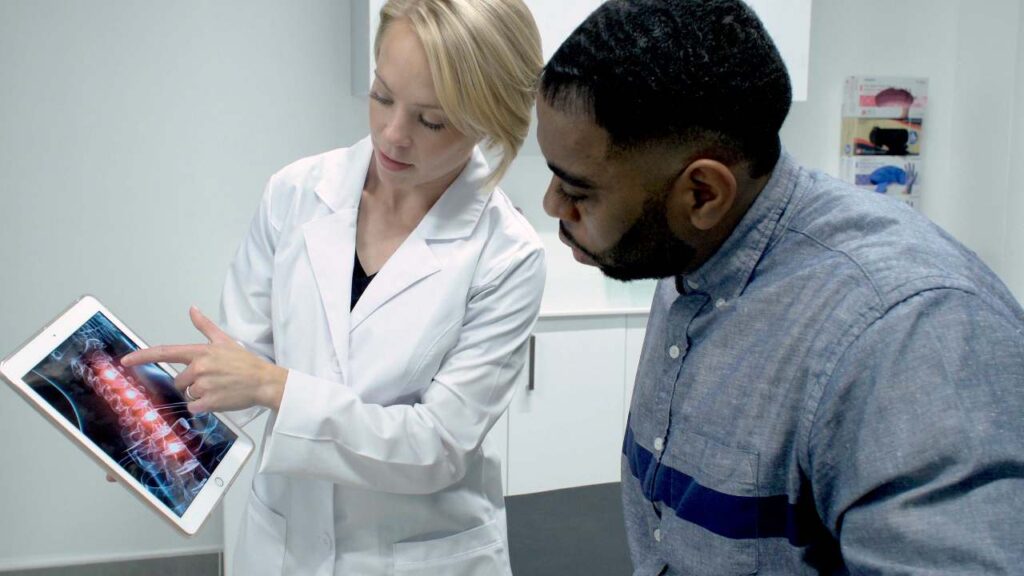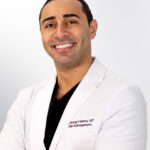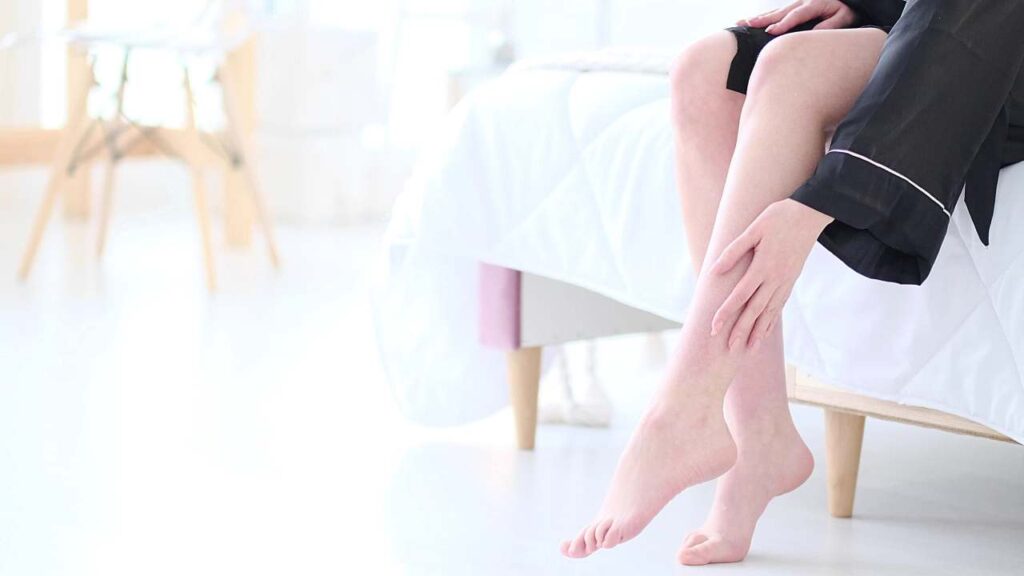Step 1: You receive hassle-free insurance verification after booking an appointment.
The first step on your vein treatment journey is booking an appointment with the vein treatment clinic in Jericho, located at 350 Jericho Turnpike Suite 1A. Once you book an appointment, you can request hassle-free insurance verification. We accept all medical insurances, including Medicare, and provide hassle-free insurance verification. Our insurance concierge will contact the insurance provider on your behalf and work out the terms and conditions before your appointment. As such, we prepare an overview of your vein treatment costs with and without insurance coverage before your actual treatment.
Step 2: The vein doctor examines your leg veins and discusses your symptoms during the initial consultation.
During your initial consultation, you’ll meet with one of our talented vein doctors — Dr. Caroline Novak or Dr. Thomas Arnold. Their primary aim is to understand your specific goals and concerns and determine if you have underlying vein disease. Venous insufficiency is a circulatory disorder in which your vein valves malfunction, which leads to backward blood flow and the accumulation of excess blood in leg veins, leading to spider veins, varicose veins, and other vein problems.
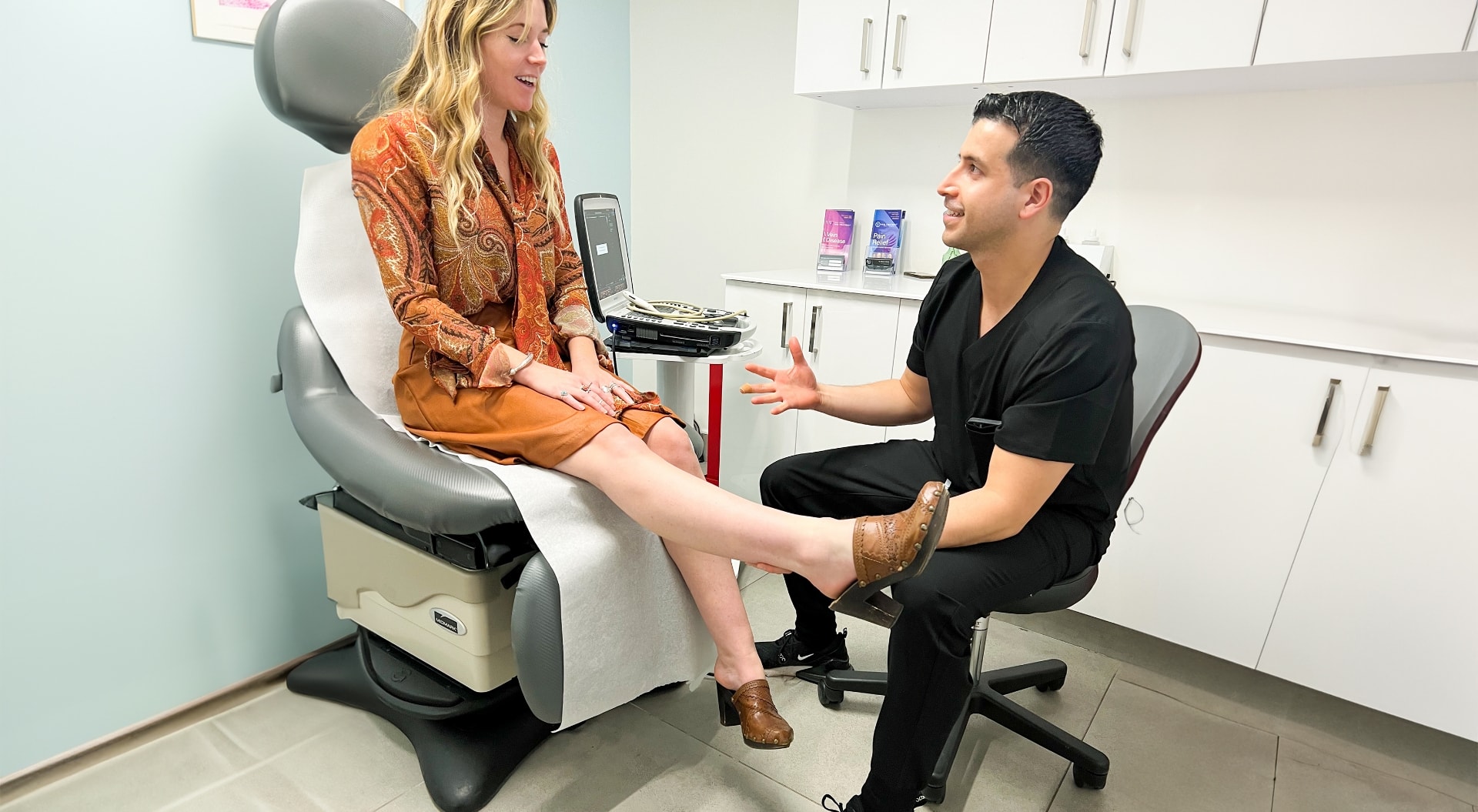
To determine if you might have vein disease, our vein doctors examine your spider veins and varicose veins, review your medical history, and discuss your symptoms. Patients with a medical history of vein problems or a family history of vein disease are more likely to have venous insufficiency. Furthermore, symptoms like leg heaviness, restless leg syndrome, frequent leg cramps, and throbbing leg veins are common indicators of chronic venous insufficiency.
Step 3: You undergo an ultrasound diagnostic test to identify the root cause of your vein problems.
After the initial consultation, the vein doctor will ask you to undergo an ultrasound diagnostic test called duplex ultrasound. This test involves using ultrasound energy to visualize the blood flow in your leg veins on a computer screen. It will allow the vein doctor to determine if you have backward blood circulation or accumulated blood in your leg veins, thereby identifying the diseased saphenous vein responsible for your vein problems. Ultrasound diagnosis is an essential component of comprehensive vein treatment.
Step 4: The vein doctor discusses your vein treatment options and curates a personalized vein treatment plan.
After diagnosing the root cause of your vein problems, the vein doctor curates a personalized vein treatment plan. The vein treatment planning process is collaborative — the vein doctor discusses all your vein treatment options, highlighting the pros and cons of each. The vein doctor also considers your medical history, symptoms, and cosmetic goals while curating the vein treatment plan. As such, this paves the way for a comprehensive and personalized vein treatment plan that addresses your unique goals and concerns, ensuring optimal results.
Step 5: You receive an overview of your treatment costs, including medical insurance.
The vein doctors at the vein treatment clinic in Jericho actively consider your financial comfort while curating a vein treatment plan. They recommend vein treatments with a higher chance of insurance coverage. Furthermore, you receive a complete overview of your vein treatment costs, with and without insurance coverage, before your vein treatment. As such, you can proceed with your vein treatment knowing exactly what you’ll owe. You can also work out third-party financing plans to lower your immediate financial burden.
Step 6: Your minimally invasive vein treatment starts with radiofrequency ablation, laser ablation, or venaseal.
Your minimally invasive vein treatment starts with radiofrequency ablation, laser ablation, or venaseal. These minimally invasive procedures address the root cause of your vein problems, chronic venous insufficiency, rather than the superficial varicose veins and spider veins. Treating underlying vein disease is a crucial first step in your vein treatment. That’s because treating spider veins without addressing the root cause is like painting over a stained wall instead of fixing the leaky pipes underneath — the stains (spider veins) will inevitably return.
Radiofrequency ablation, laser ablation, and venaseal have the same overall goal. They destroy or seal shut the diseased saphenous vein responsible for your vein problems, thereby allowing the accumulated blood to reroute into healthier leg veins. This restores optimal blood circulation to the heart. However, these minimally invasive procedures achieve this goal using different techniques. Radiofrequency and laser ablation involve delivering thermal or laser energy into the diseased vein via a catheter, while venaseal involves injecting a medical adhesive into the diseased vein to seal it shut.
Step 7: The vein doctor recommends sclerotherapy or ambulatory phlebectomy for spider and varicose veins.
Sclerotherapy is widely considered the best spider vein treatment available. This technique involves injecting a medicine called sclerosant into the spider veins — one injection per spider vein. Sclerosant fuses the spider veins’ walls, making them shrink into hardened scar tissues eventually absorbed by the body, which makes them fade away from the skin’s surface. The vein doctor performs sclerotherapy after the primary vein treatment or if you don’t have underlying vein disease.
Ambulatory phlebectomy, also known as microsurgery, is suitable for patients with large, bulging varicose veins on the skin’s surface. The vein doctor makes small incisions on the skin’s surface to physically extract the varicose veins. The incision marks gradually heal and fade away from the skin. This procedure is suitable for large varicose veins after the primary vein treatment. Since it’s a cosmetic procedure, it’s not always eligible for insurance coverage.
Step 8: You resume your daily activities and work immediately after the vein treatment.
Minimally invasive spider vein and varicose vein treatments conclude within 30 to 60 minutes with no downtime. As such, you can resume your daily activities and work immediately. You’ll have to wear compression stockings for a few days and avoid lifting heavy objects, but you can resume most of your normal activities. As such, minimally invasive vein treatments don’t interrupt your daily schedule.

